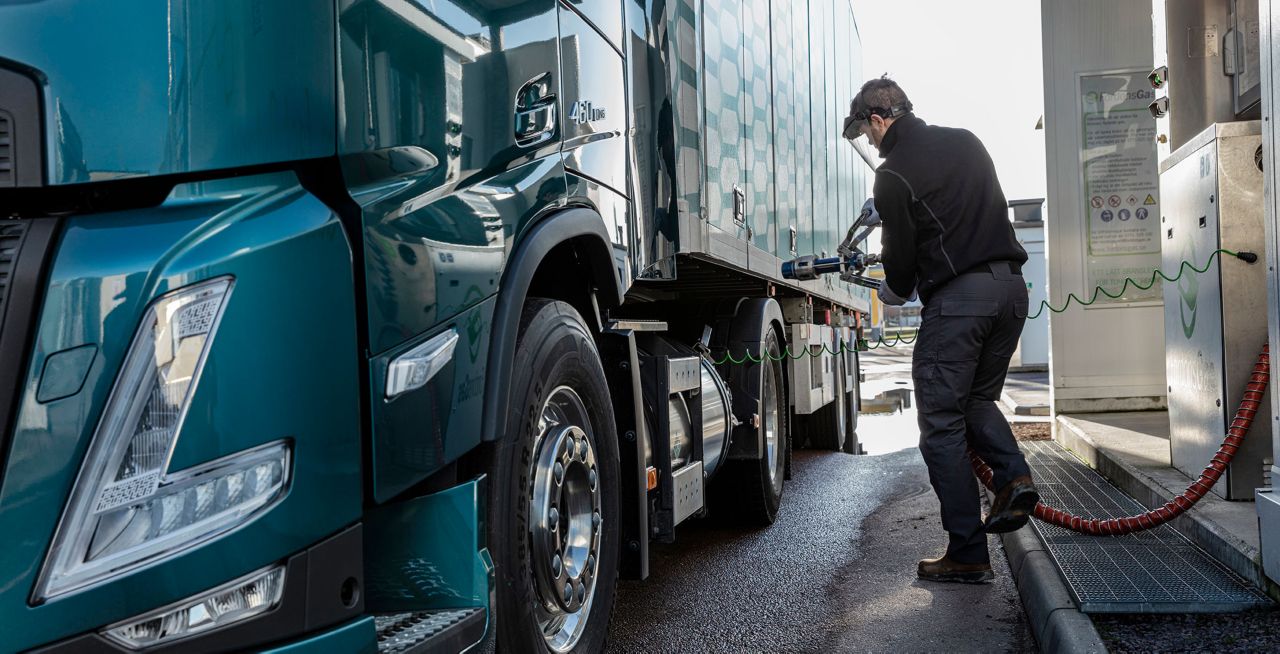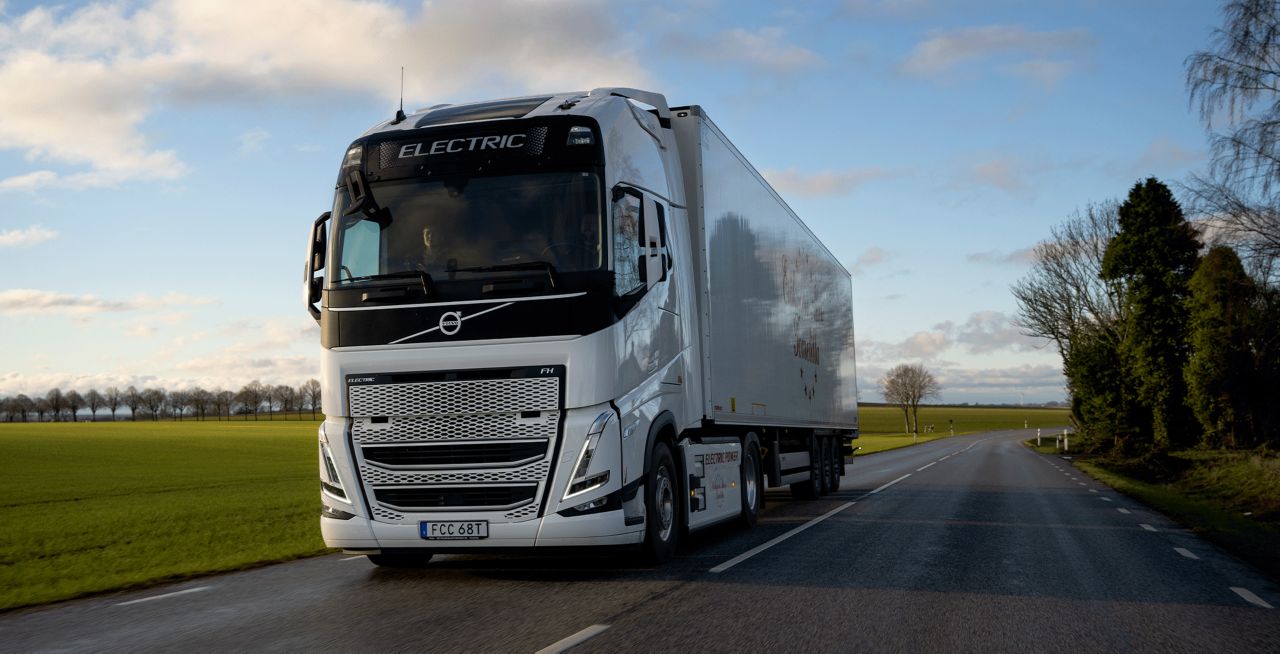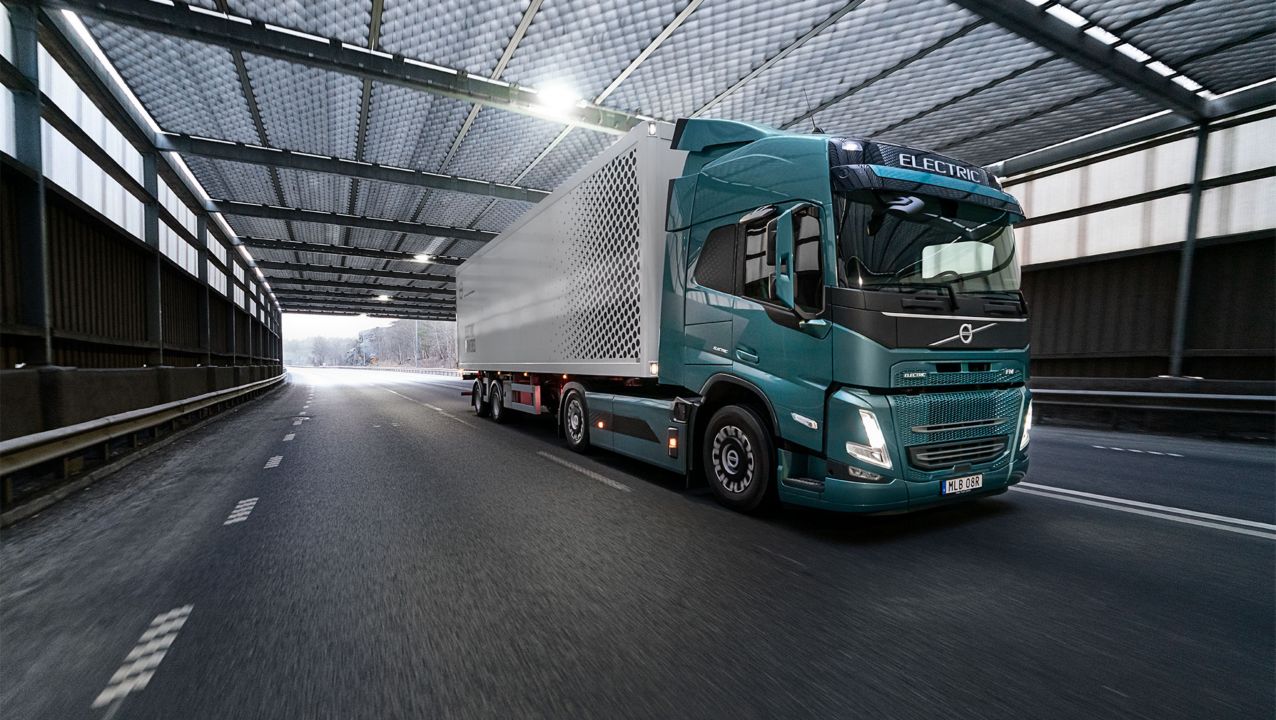With the present range limitations of electric trucks, many are quick to dismiss them as a viable option for longer distances. And yet, around 45 per cent of goods being transported in Europe today travel distances less than this, suggesting long range electric trucks are capable of much more than people realise.
On the surface, it is easy to see why people might be sceptical about using electric trucks over extended ranges. If a truck covers up to 600 km per day, it stands to reason that it can’t be replaced by a vehicle with a maximum range of 300 km. However, a closer look at today’s logistics networks shows there are in fact already many opportunities for using electric trucks for longer assignments using current technologies.
Why an electric truck’s mileage range might be longer than you think
According to Eurostat statistics around 45 per cent of all goods transported by road in Europe travel less than 300 km. This suggests that with smart route planning and scheduling, it is possible to transport much of these goods with electric trucks. Volvo Trucks’ recent research has also shown that 45 per cent of trucks used in Europe cover daily distances of less than 350 km. Internationally, 33 per cent of trucks cover daily distances of 500 km or less.
“Much of the medium range transport can be carried out by electric trucks already today,” says Anders Grauers, Associate Professor in hybrid and electric vehicle systems at the Chalmers University of Technology. “The most demanding long range transport is not yet ready, mainly because of a lack of public charging infrastructure, the batteries being slightly too small and the charging power on the trucks being a little too low. But it is almost certain that we will see electric long-haul trucks, because they will be the most cost-effective solution. This is because electricity is so much cheaper than diesel.”
Plan your charging and extend vehicle’s range
The key to extending an electric truck’s range beyond its 300 km limit is being able to implement charging opportunities in its schedule. A strategically placed charger – ideally at a location and time when the vehicle must stop anyway - have a significant impact on a truck’s range.
“In Europe, drivers are legally required to stop for a break after a maximum of four and a half hours, and in reality will typically have a break after 3-4 hours. Since the distance covered in this time will be less than 300 km, if you can find a way to charge the truck during the driver’s break, then that is a really effective way of extending the truck’s range without extending their shift,” says Henrik Engdahl, Business Development Director, Volvo Trucks.
Initially the most feasible assignments for long range electric trucks are the ones that stick to the same, regular routes since it allows trucks to stop at the same places. For example, with two strategically placed charging stations, DHL Freight is currently using electric trucks to transport goods between Gothenburg and Jönköping, Sweden - a distance of 150 km - with the trucks carrying up to 60 tons gross combination weight and covering 450 km per day.
Also in Sweden, a new public charging station for heavy-duty trucks built at the Volvo Trucks dealership in Helsingborg, will enable electric trucks to complete two return trips between the cities of Gothenburg and Malmö - a distance of 270 km. Under the proposed route, a fully-charged truck can drive from the port in Gothenburg to Malmö, drop off its trailer and still have enough energy to make it to the charging station in Helsingborg (north of Malmö and on-route back to Gothenburg). It will then require 90 minutes to recharge, which coincides with the driver’s break, before being able to return to Gothenburg. All this - including the driver’s break - can be completed within an eight-hour shift, before a second driver takes over the vehicle and makes an additional return trip on the same day.
“A truck relying on one overnight charge, will be limited to operating within a radius of 120 km from their home depot, so that they have a safe margin for returning before their battery is flat,” explains Henrik. “But having access to just one extra charging station can significantly broaden your operating area and allow you to drive even further.”

Much of the medium range transport can be carried out by electric trucks already today. It's almost certain that we will see electric long-haul trucks, because they will be the most cost-effective solution.
More charging stations, more possibilities to increase reach
Many countries already have large-scale investments in place to ensure rapid growth of public charging stations for long range electric trucks over the coming years. For example, In Germany, the HoLa project will see new charging stations for heavy trucks being built in four locations on the A2 highway between Berlin and the Ruhr region.
In Sweden, the government is funding the construction of more than 100 charging stations for heavy duty trucks to be completed by 2023. When the planned network is completed, it will enable electric trucks to operate across the whole country.
In the longer-term, Volvo Trucks is part of a joint venture that plans to install and operate at least 1,700 charging stations near highways and logistics hubs across Europe. After collecting and analysing GPS coordinates from around 400 000 trucks operating throughout Europe, ACEA (European Automobile Manufacturers’ Association) has identified over 40 000 locations suitable for charging stations, which would support the creation of a EU-wide network.
With the opening of every new charging station, the opportunities for using electric trucks already in operation will grow exponentially. In the coming years, battery capacities and vehicle ranges are also expected to improve, but even using the technologies available today, in countries where investments are being made in public charging infrastructure, the potential is far larger than many realise.
“Per kilometre it is cheaper to charge an electric truck than to buy fuel for a diesel truck,” says Anders Grauers. “In general, the cost of electricity is only about a quarter of the cost of diesel. So even if the price of electricity doubled, it would still be cheaper than diesel. That means that an electric truck is more profitable the more it is driven, so you should start with electrifying the trucks that are driven a lot.”
Hear more from Associate Professor Anders Grauers and how he sees the future of electric trucks and long-range transportation, including:
● Which long range applications are likely to be electrified first.
● Why rising electricity prices are unlikely to slow the transition to electrification.
● Why public charging infrastructure for electric trucks will be so important.


